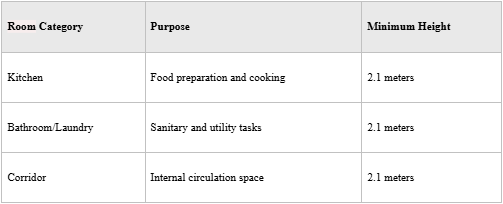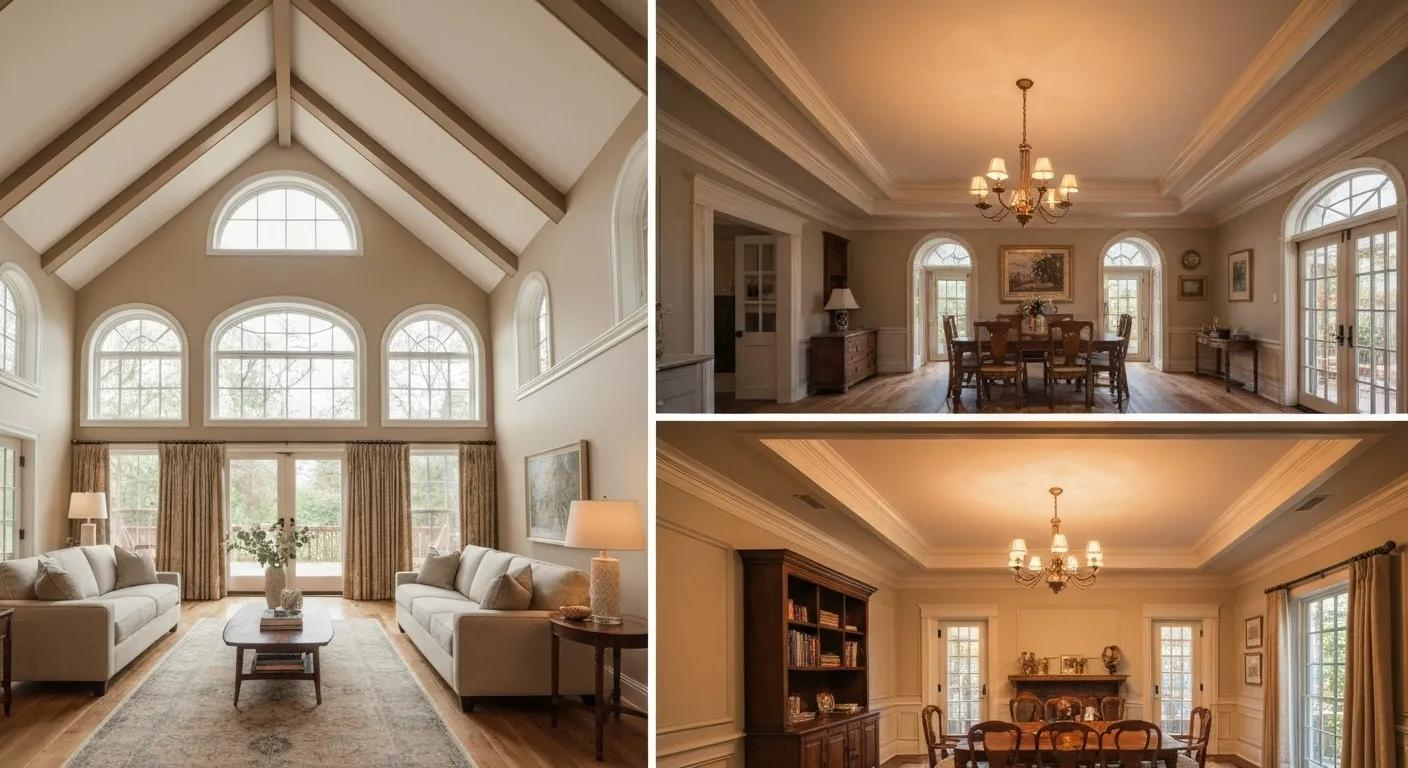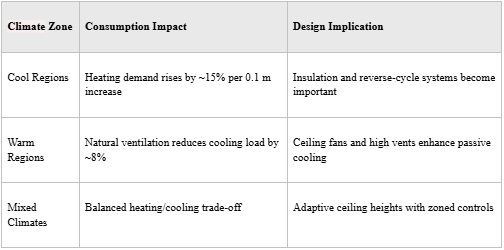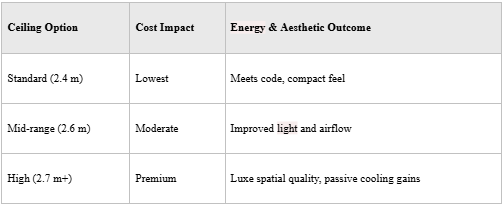Australian homes increasingly feature elevated ceiling heights that reshape spatial comfort, energy performance, and market value. As ceiling height rises from the National Construction Code’s 2.4 m minimum to modern averages of 2.7 m, homeowners and builders encounter regulatory thresholds, aesthetic opportunities, and budgetary considerations. This guide delivers clear insights into NCC requirements, evolving design trends, cost–benefit analysis, energy implications, and Livit Construction’s custom solutions for Brisbane residences. You will learn:

The National Construction Code establishes ceiling height minima to ensure habitability, ventilation, and occupant well-being. By defining separate thresholds for habitable and non-habitable rooms and specifying measurement rules for sloping ceilings, the NCC creates uniform safety and comfort standards across Australia.
The National Construction Code (NCC) establishes minimum ceiling heights for Australian residential buildings, mandating 2.4 meters for habitable rooms such as bedrooms and living areas, and 2.1 meters for non-habitable spaces including kitchens, bathrooms, and corridors. For rooms with sloping ceilings, at least two-thirds of the floor area must maintain these minimum clearances.
Habitable rooms must maintain a minimum vertical clearance to support normal domestic activities and adequate air circulation.

These requirements ensure that each habitable room allows sufficient headroom, natural light penetration, and cross-ventilation, preparing us to examine rules for non-habitable areas.
Non-habitable spaces have a slightly lower regulatory threshold, reflecting their intermittent use and smaller area footprint.

By differentiating between activity zones, the NCC balances material efficiency with occupant comfort, and next we explore special cases such as sloping ceilings.
Sloping ceilings in roof spaces must provide full-height clearance over a designated floor area to remain code-compliant. Specifically, at least two-thirds of the usable floor must sustain a minimum height of 2.4 m for habitable and 2.1 m for non-habitable zones. This approach prevents constricted headroom and preserves functional living or storage spaces while accommodating pitched roof designs.
Although the NCC provides a federal baseline, state and local councils may enforce additional requirements, especially in high-growth regions like Queensland. Brisbane City Council often recommends or mandates ceiling heights of 2.5 m or above in new residential zones to improve airflow in subtropical climates. Livit Construction navigates both NCC and council overlays to secure approvals and optimise design for local environmental conditions.
Modern residential architecture has shifted from the traditional 2.4 m standard to an average of 2.7 m, driven by market demand for spaciousness and performance enhancements. This upward trend reflects buyer preferences for voluminous interiors, improved natural light distribution, and passive climate control benefits.
Industry data indicates:
As more developments advertise 2.7 m clearances, the standard has evolved into a competitive differentiator for residential value.
Modern Australian homes are increasingly featuring elevated ceiling heights, with recent data indicating that 65% of new builds exceed the National Construction Code's minimum standards. A 2023 Property Council of Australia survey found that 72% of homebuyers prioritise ceiling height in their purchase decisions, highlighting a strong market demand for more spacious interiors.
Homeowners opt for elevated ceilings to:
These benefits interlock to form healthier, more comfortable living environments, leading naturally to a Brisbane-specific perspective.
In Brisbane’s subtropical climate, higher ceiling heights support passive cooling by allowing warm air to rise above living areas. Local architectural styles integrate 2.7 m or greater ceilings with wide eaves and cross-ventilated layouts.
Livit Construction leverages this synergy to customise Brisbane homes that honor regional aesthetic and performance benchmarks.

Ceiling height exerts a dual influence on both market appeal and ongoing energy costs. While higher ceilings generally command premium sale prices, their volumetric effect can increase heating or cooling loads if unmitigated.
Elevated ceiling heights signal architectural quality and spatial luxury, leading to:
These factors underscore why Livit Construction integrates ceiling height strategy into valuation-focused design.

Understanding these variations helps customise ceiling heights and integrated systems to match local energy profiles.
Elevated ceiling heights can significantly increase property value, with data from the Australian Bureau of Statistics showing that homes featuring 2.7m or higher ceilings experienced a 9% increase in resale value compared to those with standard 2.4m ceilings over the last five years. However, the impact on energy consumption varies by climate; studies by the University of Melbourne indicate that higher ceilings can increase heating costs by up to 15% in colder regions, while in warmer climates like Queensland, they can enhance natural cooling and reduce energy loads.
In Queensland’s humidity and heat, 2.7 m or greater ceilings facilitate stratified airflow that expels hot air above occupied zones. Combining raised clearances with ceiling-mounted fans and high-level vents allows Livit Construction to optimise comfort while controlling mechanical cooling usage.
Decisions on ceiling height directly affect structural, material, and labor expenses. While higher ceilings boost spatial quality, they require additional framing, cladding, and finishing work that can reshape project budgets.
Raising a ceiling by 300 mm typically increases structural and finishing costs by 4–7%. Key drivers include:
Clients should weigh these incremental costs against long-term value and market expectations.
Livit Construction guides clients through:
This approach promotes informed decisions that align aesthetic goals with budgetary parameters.
All ceilings built by Livit Construction carry a seven-year structural warranty and a three-month maintenance period, covering plaster integrity, cornice stability, and insulation performance. Higher ceilings may require periodic checks on ventilation fittings and ceiling-fan mounts to ensure lasting compliance and functionality.
Livit Construction merges deep knowledge of local regulations, climate dynamics, and architectural trends to deliver bespoke ceiling height solutions that balance compliance, comfort, and style.
Clients can choose from:
These customisations reinforce design individuality while adhering to NCC guidelines.
Every project begins with a comprehensive regulatory review that maps NCC minimums and Brisbane City Council overlays. Livit’s quality assurance process includes dimensional checks at framing, before plaster, and at final inspection, ensuring seamless certification and occupancy approval.
Ceiling height strategies are coordinated with:
This holistic approach ensures that ceiling height improvements deliver measurable comfort and aesthetic gains.
Homeowners and builders often seek clarity on legal requirements, practical benefits, and renovation feasibility before specifying ceiling heights. By addressing core concerns, Livit Construction streamlines early design decisions.
Under the NCC, habitable rooms must have a finished ceiling height of at least 2.4 m, while non-habitable rooms require no less than 2.1 m.
A 2.7 m ceiling height aligns with current design trends and buyer preferences, offering enhanced spaciousness, better airflow in warmer climates, and improved resale appeal.
Bedrooms, dining spaces, and living rooms require 2.4 m, whereas bathrooms and laundries are permitted at 2.1 m under NCC provisions.
While higher ceilings can raise heating loads in colder regions due to increased volume, in warmer zones like Queensland they reduce cooling energy consumption by promoting effective natural ventilation.
Modifying ceiling height in existing homes is feasible but often involves reinforcing roof framing, adjusting wall finishes, and upgrading services. Livit Construction manages through detailed structural assessments and transparent costing.
Visual representation crystallises compliance rules and design outcomes, empowering stakeholders to make informed decisions quickly. Diagrams, project imagery, comparison tables, and video explainers each serve distinct roles in clarifying
concepts.
A simple sectional diagram showing habitable and non-habitable room clearances over floor plans can highlight the 2.4 m and 2.1 m minima, while a roof-section graphic conveys sloping ceiling measurement rules.
Photographic comparisons of rooms pre- and post-height adjustment reveal tangible differences in light distribution, sense of space, and interior styling opportunities.

This side-by-side view supports balanced decisions on budgets and performance.